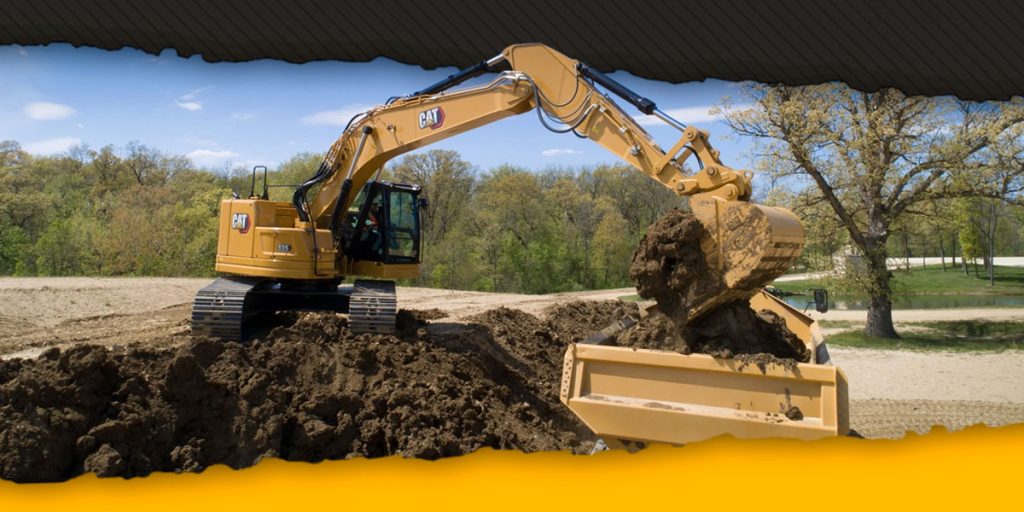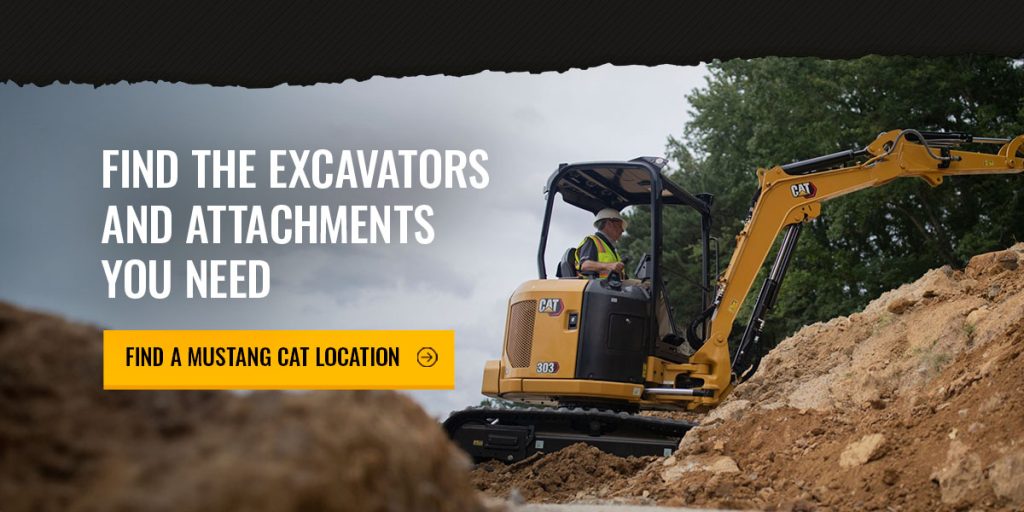Uses for Excavators on a Construction Site

The construction industry uses a wide range of equipment and tools to accomplish many tasks. Equipment varies in size, versatility and usage, and selecting the right equipment for each job is essential to remain on time and within budget.
Excavators are some of the most common equipment for construction projects due to their versatility and compatibility with many attachments. Below, you can discover this equipment’s importance and the many tasks you can accomplish by adding an excavator to your fleet.
Common Types of Excavators and Attachments
Excavators play a vital role in enhancing efficiency and productivity on construction sites. This equipment ranges in size and can use various attachments to complete projects on different soil types and terrain. Some common types of excavators used to complete construction tasks include:
- Crawlers for grading, digging, mining and trenching
- Wheeled excavators for urban excavation and roadwork
- Dragline excavators for pile driving, excavating and underwater operations
- Skid steers for removing debris and residential projects
- Long-reach excavators for heavy-duty digging and industrial demolition
- Mini excavators for narrow or challenging job sites and working on delicate terrain
Top Excavator Uses in Construction
Depending on the type of excavator you choose, you can accomplish tasks of different complexities and sizes. Additionally, having a range of attachments at your disposal can increase your excavator usage and make more tasks easier to complete, allowing you to expand your project offerings.
You can use an excavator and attachments to complete the following tasks:
1. Excavation and Digging
Excavators are excellent for clearing land and preparing the job site. You can dig trenches, move soil, rock and dirt, create holes, and complete similar preparation tasks. These capabilities allow you to trench for foundations and dig for utility line work. Teams can also complete tunneling tasks, creating underground passageways of varying depths depending on the excavator’s size.
2. Material Handling
Material handling is vital for many construction projects, especially large projects such as reconstructing or repaving roads or replacing utility lines. These projects rely on heavy materials that teams must remove from the project site or displace during operations.
Excavators make lifting and moving these materials away from the work area easy. Whether you need to move large boulders and fixtures for landscaping, carry debris away from your project site or move heavy pipes, you can rely on this equipment to clear your path. Several clamp attachments are available for carefully picking up and placing heavy materials that workers can’t move.
3. Demolition Work
Demolition tasks can take place in a variety of settings, from large commercial areas to small residential blocks. Excavators empower teams to complete this task safely and work more efficiently in any space while providing essential stability and powerful capabilities to enhance productivity.

In many cases, teams must also remove the debris from a fallen or demolished structure. The material handling capabilities of excavators make them dually equipped to handle this task. Additionally, because debris can include many types of materials, there are a variety of attachments to address your varying demolition and materials handling needs as you move from project to project.
4. Landscaping and Grading
Construction teams can quickly complete landscaping projects by using excavators to shape land. For example, sculpting the ground allows teams to create new spaces for paths, plants and other landscaping elements.
Grading is also possible with excavators, as teams can use them to create the flat surface necessary for jobs that require stability. Additionally, by controlling water flow, teams can mitigate and avoid drainage problems that could damage structures, property or equipment.
Teams can use excavators to complete projects such as pond and pool installation, patio excavation or installation, soil management, parking lot or driveway creation, new utility preparation, and more.
5. Specialized Tasks
Although the above applications are common excavators uses for construction teams, this equipment’s versatility allows it to further enhance construction productivity and efficiency by completing specialized tasks.
For example, teams can complete pile driving and snow removal with excavators and various attachments. Pile driving allows teams to overcome obstacles such as narrow passages and low overhead clearance. Using a mini excavator and attachments like brooms, scrapers or snow blades, your team can clear snow from tight concerns, sidewalks and other areas with limited accessibility. You can also use this equipment to excavate frozen ground, ensuring productivity throughout the year.
With a range of attachments at your disposal, you can use your excavator to get a variety of specialized tasks done with ease.
Excavator Safety and Maintenance Considerations
Like other heavy equipment, proper machine usage, operator training and routine maintenance are essential for ensuring excavator safety, efficiency, productivity and longevity. Keep these considerations in mind when investing in and using any excavator:
Preventive Maintenance
Routine care and preventive maintenance are essential for ensuring you get the most out of your investment and continue operating equipment at peak efficiency. Routine maintenance allows you to identify and address any existing issues and prevent larger problems from arising that could cause unwanted downtime.
Be sure to administer repairs promptly by connecting with a reputable heavy equipment repair servicer with experience working on your machine type. It’s also important to invest in quality machine replacement parts to keep your machine working as expected.
Operator Training
Each worker should receive operator training before using the machine. This training should provide a comprehensive overview of the excavator’s control, uses, recommendations and other essential information to ensure safety and efficiency. Monitor updates in operator training and ensure each worker receives new training as necessary.
Safety Protocols
You must always have safety protocols in place to ensure worker, property and equipment safety. These protocols apply to usage and the steps your teams take before and after operation. Some standard protocols you could set in place include keeping the machine clean, examining the controls before starting operation, parking the machine on a level surface when finished using it, locking the cab after exiting, and maintaining three points of contact when exiting or entering.

Find the Excavators and Attachments You Need
Mustang Cat® proudly serves Southeast Texas, offering high-quality, reliable and efficient equipment to get the job done right. Those in Houston and the surrounding areas can depend on our team to expand their fleet with new and used equipment from Caterpillar, including a range of excavators and attachments.
With more than 70 years of industry experience and industry-leading response time, you can feel confident that we can find the right solution to help you continue driving results on your project site. Visit a Mustang Cat location near you to speak with one of our representatives and find the machinery and tools you need for your next job.


